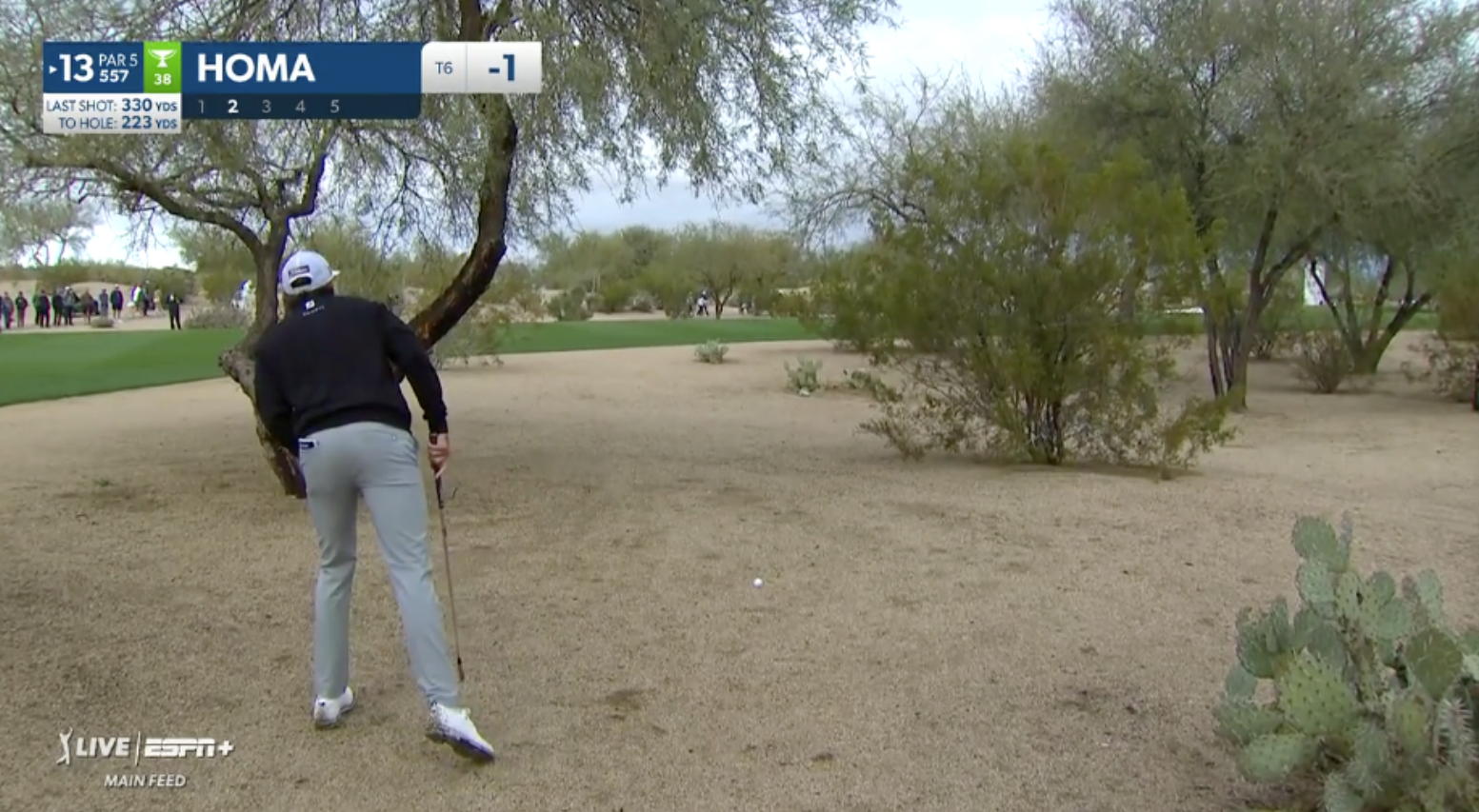Copy the Phoenix Open.
I’m not talking about copying the beer bongs or the crisis actors. I’m talking about the golf. TPC Scottsdale has attributes that produce both a phenomenal entertainment product and a proper examination of skill. Should every course on the PGA Tour look and play exactly like TPC Scottsdale? No. Variety is good. Trying to replicate existing courses can quickly lead to formulaic, uncreative designs. But should the PGA Tour strive to have more venues with playing qualities that resemble the WM Phoenix Open? Absolutely.
At TPC Scottsdale, some of the fairways are narrow, but none of the fairways are comically narrow. They’re hittable; players tend to find the fairways at TPC Scottsdale ~55% of the time. And, thankfully, the fairways aren’t surrounded by thick rough. Instead, many of them bleed into the desert-like terrain or short rough. At other golf courses like Torrey Pines or Oak Hill, tee shots are penalized in a more binary fashion: rough or fairway. At TPC Scottsdale, the penalty associated with missing the fairway increases based on the magnitude of your miss. In other words, you have to control the golf ball.
In Phoenix, you aren’t dead if your ball bounds off the fairway. Sure, you might end up in a cactus, forced into taking an unplayable, but more frequently you’ll have some options. It’s one of the rare stops on the PGA Tour schedule where you’ll see players hit crafty, well-shaped recovery shots off tight, manageable lies, rather than just thrashing the ball out of thick rough.

Max Homa, preparing to play the kind of shot that wouldn't exist at most venues on the PGA Tour.
Large and firm, the green complexes are another key ingredient of TPC Scottsdale’s recipe. Players must control their approach shots or risk the ball rolling into unfavorable locations, resulting in tricky up-and-downs. The longer the golf course plays, the more control is required on approach, as the ball bounces and rolls more when hit with a 5-iron than when it’s struck with a wedge. Rounds on Thursday and Friday offered a refreshing glimpse into what professional golf looks like when the golf ball doesn’t travel so damn far. The cold, rainy, windy conditions placed a governor on the golf ball, and fans who tuned into the WM Phoenix Open were treated to a wide range of shots hit into greens. Unfortunately, rain reduces firmness, which compromises shot value because ball control and positioning become less important. Imagine if there were a way to make golf courses longer without needing to lengthen every golf course on the PGA Tour or rely on cold, windy conditions.
Great golf courses breed great golf tournaments, and TPC Scottsdale is a spectacular example of that concept in action. If reading my description of TPC Scottsdale’s playing qualities reminded you of Augusta National, I like the way you think. TPC Scottsdale and Augusta National may have a completely different aesthetic and vibe, but they definitely share some playing characteristics. It isn’t surprising to see certain players (Hoffman, Spieth, Scheffler, Matsuyama, etc.) experience sustained success at both TPC Scottsdale and Augusta. And as one astute X user pointed out yesterday, the par sequencing on the back nine is identical. Tournaments at Augusta usually aren’t too shabby, eh?
Congrats to Nick Taylor on the unbelievably impressive win. See you at Augusta.
This piece originally appeared in the Fried Egg Golf newsletter. Subscribe for free and receive golf news and insight every Monday, Wednesday, and Friday.


 by
by 
